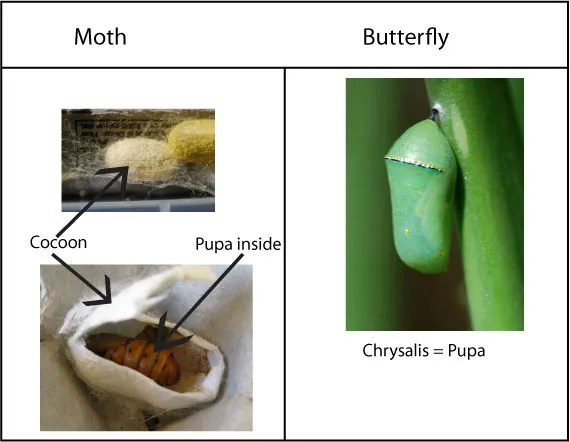 Have you ever taken your children on a hunt for caterpillars? It is a lot of fun when you see their faces light up and hear their squeals of delight when they find one.
Have you ever taken your children on a hunt for caterpillars? It is a lot of fun when you see their faces light up and hear their squeals of delight when they find one.
Here are some ways to increase the chances for finding caterpillars in nature:
1. Find out when caterpillars might be found in your area.
Get to know the life cycles of some local butterflies and moths by searching the internet, reading books and checking with local experts. For example, in Arizona our caterpillars are most numerous now (August) through the fall. They feed on the plants that grow after the summer rains.
2. Find out where to look for them.
Learn the host plants of some common butterflies and moths in your region. We know to look for queen butterfly caterpillars on our milkweed plants, giant swallowtail on the new foliage of citrus trees, and rustic sphinx on the desert willow. This is simply a case of time and experience, so learn a few at a time.

3. Look for holes in leaves and missing plant parts.
If you remember that caterpillars have chewing mouthparts and eat plants, you already have a clue. Look for plants that have been chewed on. Sometimes the holes are large, like in the leaf above…

… and sometimes the holes are smaller, because the caterpillars are smaller. If you see holes, gently flip the leaf over. The caterpillar may be hiding on the underside or a nearby stem.
4. Look for other clues a caterpillar is nearby.
See those black things on the leaf above that look like pepper? Those are the caterpillar droppings, which entomologists call frass.

Serious bug hunters might place a white piece of paper or a white sheet under a plant to check for frass. That will give you an idea on which part of the plant the caterpillar is hiding.
5. Bring a hand lens or magnifying glass.
If you look very closely, you might also find butterfly or moth eggs.

This is a tobacco hornworm egg.

Once the egg has hatched, some butterflies and moths eat the empty shell, and some leave it behind.

This is a tiny hornworm larva that hatched from an egg.

It is chewing on the edge of the leaf.


Look how big its horn looks in comparison to its body!
Okay, enough with the darling baby caterpillars, let’s get back to our topic.
6. Look for silk.
Spiders aren’t the only ones who make silk, so do many caterpillars. They may use the silk to build retreats out of leaves, causing the leaf or flower petal to roll up. They also use silk to make trails to walk around. Moth caterpillars use their silk to make a cocoon to pupate in. If you see a rolled up leaf that has wisps of silk around it, peek inside to see who is at home.
Hope these tips are helpful. If you chose to, let us know what you find. We’d also like to hear if you have any suggestions of your own or any questions.
Happy hunting!
_____________________________________
If your children become seriously interested in caterpillars, you may want to find a field guide to help with identification.
Discover Life has an online, interactive website to identify caterpillars.
Field Guide suggestions:
Caterpillars of Eastern North America: A Guide to Identification and Natural History (Princeton Field Guides) by David L. Wagner
by David L. Wagner
 Caterpillars in the Field and Garden: A Field Guide to the Butterfly Caterpillars of North America (Butterflies [Or Other] Through Binoculars)
Caterpillars in the Field and Garden: A Field Guide to the Butterfly Caterpillars of North America (Butterflies [Or Other] Through Binoculars) by Thomas J. Allen, James P. Brock, and Jeffrey Glassberg
by Thomas J. Allen, James P. Brock, and Jeffrey Glassberg

Peterson First Guide to Caterpillars of North America by Amy Bartlett Wright and edited by Roger Tory Peterson
by Amy Bartlett Wright and edited by Roger Tory Peterson

Be sure to check our list of children’s books about moths and butterflies, as well.
Disclaimer: Linked titles go to Amazon for further information and reviews. Just so you know, I am an affiliate with Amazon. If you make a purchase after clicking on one of the links, I will receive a small commission at no extra charge to you, the proceeds of which will help pay for maintaining this website.
by Elisa Kleven.



















